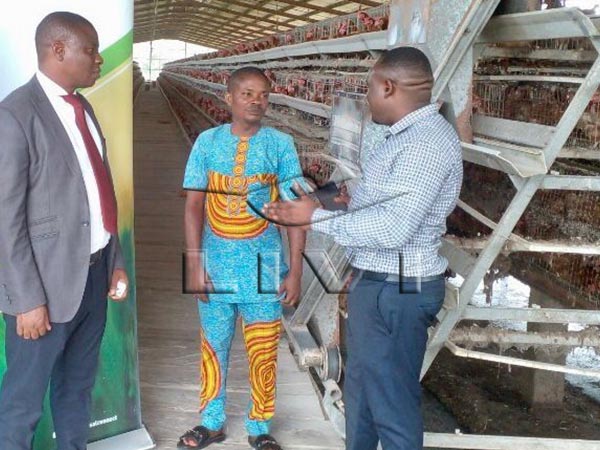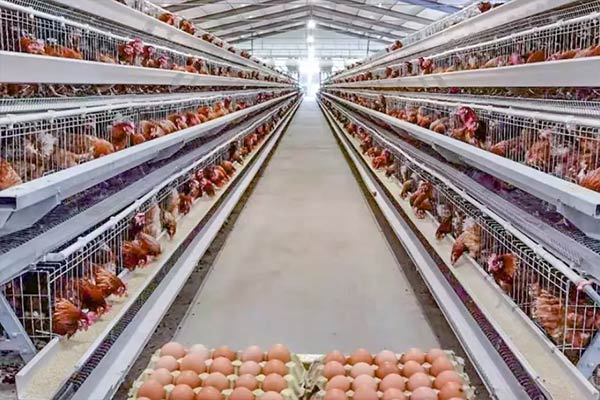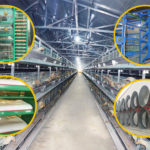The poultry farming industry has evolved significantly over the years, with advancements in technology making it easier and more efficient to manage large flocks of layer chickens. One of the most crucial aspects of modern poultry farming is the housing system used for the birds. Among the various types of housing systems available, the manual battery cage and the automatic battery cage for 10000 layers stand out due to their efficiency and practicality. This comprehensive guide aims to explore these two types of battery cages, their benefits, and their application in poultry farming.
Understanding Battery Cages
Battery cages are a type of housing system designed specifically for layer chickens. These cages are used to house a large number of chickens in a limited space while ensuring that each bird has access to food, water, and laying areas. There are two main types of battery cages: manual battery cages and automatic battery cages for 10000 layers. Each type has its own set of advantages and is suited to different farming needs.

Manual Battery Cages
What Are Manual Battery Cages?
Manual battery cages are a traditional type of housing system where most of the operations, such as feeding, watering, and egg collection, are done manually by the farm workers. These cages are designed to house a specific number of layer chickens, providing them with a comfortable and secure environment to lay eggs.
Features of Manual Battery Cages
- Durability: Manual battery cages are typically made from high-quality materials like galvanized steel, which ensures longevity and resistance to rust and corrosion.
- Accessibility: These cages are designed in a way that allows easy access to the birds for feeding, watering, and egg collection.
- Cost-Effectiveness: Since manual battery cages do not require complex machinery or automated systems, they are often more affordable compared to their automatic counterparts.
Benefits of Manual Battery Cages
- Control Over Operations: With manual battery cages, farmers have more control over the daily operations, allowing for personalized care and attention to the chickens.
- Flexibility: Manual systems can be easily adjusted or modified to suit the specific needs of the farm without the need for technical expertise.
- Lower Initial Investment: The initial cost of setting up manual battery cages is generally lower, making it an attractive option for small to medium-sized farms.

Automatic Battery Cages for 10000 Layers
What Are Automatic Battery Cages?
Automatic battery cages for 10000 layers are advanced housing systems equipped with automated mechanisms for feeding, watering, egg collection, and waste management. These cages are designed to accommodate large-scale poultry farming operations, ensuring high efficiency and productivity.
Features of Automatic Battery Cages
- Automation: These cages come with automated systems that handle feeding, watering, egg collection, and waste removal, significantly reducing the need for manual labor.
- High Capacity: Automatic battery cages are designed to house up to 10000 layer chickens, making them ideal for large-scale poultry farms.
- Efficient Space Utilization: The design of automatic battery cages ensures optimal use of space, allowing farmers to house a large number of birds in a limited area.
Benefits of Automatic Battery Cages
- Increased Productivity: Automation leads to more consistent and efficient operations, resulting in higher egg production and better overall farm performance.
- Labor Savings: With automated systems handling most of the daily tasks, the need for manual labor is significantly reduced, leading to cost savings in the long run.
- Enhanced Biosecurity: Automatic battery cages are designed to minimize human contact with the birds, reducing the risk of disease transmission and improving biosecurity on the farm.
Comparing Manual and Automatic Battery Cages
Efficiency and Productivity
When comparing manual battery cages and automatic battery cages for 10000 layers, one of the most significant differences lies in efficiency and productivity. Automatic battery cages, with their automated systems, ensure consistent feeding, watering, and egg collection, leading to higher productivity. In contrast, manual battery cages rely on human labor, which can be less consistent and efficient.

Cost Considerations
While manual battery cages have a lower initial investment, the ongoing labor costs can add up over time. On the other hand, automatic battery cages require a higher upfront investment but offer significant labor savings and increased productivity, which can offset the initial costs in the long run.
Maintenance and Operation
Manual battery cages require regular maintenance and operation by farm workers, which can be time-consuming. Automatic battery cages, although requiring periodic maintenance, offer more streamlined operations with less manual intervention.
Choosing the Right Battery Cage for Your Farm
Factors to Consider
- Farm Size: The size of your poultry farm plays a crucial role in determining the type of battery cage that is most suitable. For smaller farms, manual battery cages may be more practical, while larger farms can benefit from the efficiency of automatic battery cages for 10000 layers.
- Budget: Your budget will also influence your choice. While manual battery cages are more affordable upfront, automatic battery cages offer long-term savings and higher productivity.
- Labor Availability: If you have limited access to labor, automatic battery cages may be the better option as they reduce the need for manual work.
Making an Informed Decision
When deciding between manual and automatic battery cages, it is essential to consider the long-term benefits and costs. Automatic battery cages for 10000 layers, despite their higher initial investment, offer significant advantages in terms of productivity, labor savings, and biosecurity. However, manual battery cages can be a viable option for smaller farms or those with a tighter budget.
Layer Chicken Cages for Sale
Finding the Right Supplier
When looking for layer chicken cages for sale, it is crucial to find a reputable supplier. Whether you choose manual or automatic battery cages, ensure that the supplier offers high-quality products that meet your specific needs.

Evaluating Quality
- Material: Ensure that the cages are made from durable materials like galvanized steel to withstand the harsh conditions of a poultry farm.
- Design: The design of the cages should promote the well-being of the chickens, providing adequate space, ventilation, and access to food and water.
- Warranty: A good warranty indicates the supplier’s confidence in the quality of their product.
Making the Purchase
When purchasing layer chicken cages, consider factors such as the supplier’s reputation, the quality of the cages, and the after-sales support offered. Investing in high-quality cages will ensure the long-term success of your poultry farming operation.
Conclusion
In conclusion, both manual battery cages and automatic battery cages for 10000 layers have their own set of advantages and are suited to different farming needs. Manual battery cages offer control and flexibility at a lower initial cost, making them ideal for smaller farms. Meanwhile, automatic battery cages provide higher productivity, labor savings, and enhanced biosecurity, making them a worthwhile investment for larger-scale operations. When looking for layer chicken cages for sale, it is essential to choose a reputable supplier and invest in high-quality cages that will support the health and productivity of your flock. By carefully considering your farm’s size, budget, and labor availability, you can make an informed decision that will contribute to the long-term success of your poultry farming business.






